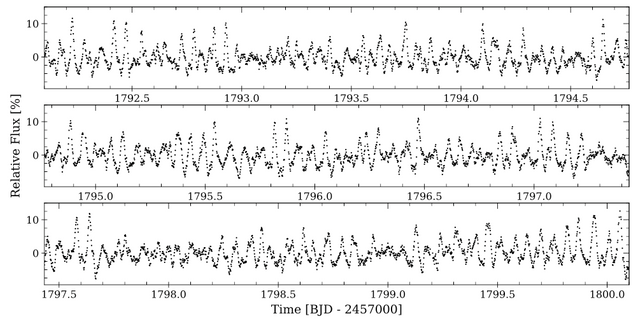TESS watches a low-mass white dwarf pulsate

In October 2021, former BUWD group member Isaac Lopez led a global collaboration announcing the discovery, characterization with TESS, and asteroseismic modeling of the pulsations in the first extremely low-mass white dwarf observed from space: GD 278. Using a method to select variable white dwarfs from Gaia pioneered by our group, we first saw pulsations from McDonald Observatory in August 2019. We quickly secured TESS data (see above), producing some of the best data on a pulsating white dwarf ever collected. We matched the observed oscillation periods to theoretical models with multiple stellar evolution codes. This is now the lowest-mass white dwarf with a measured rotation rate. The work by Lopez, Hermes, Calcaferro et al. 2021 was accepted for publication and will appear soon in the Astrophysical Journal; a thread can be found here on Twitter: https://twitter.com/jotajotahermes/status/1446514046027640839?s=20.